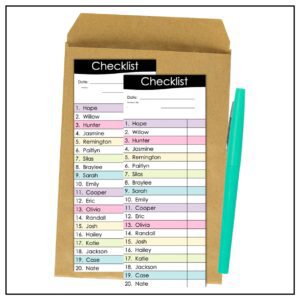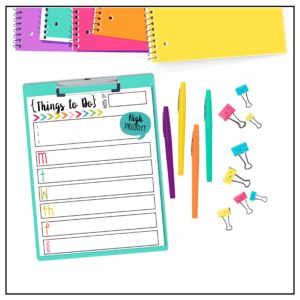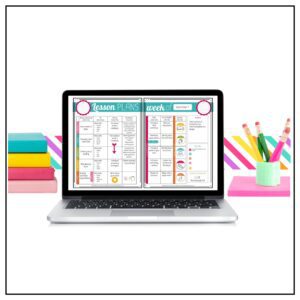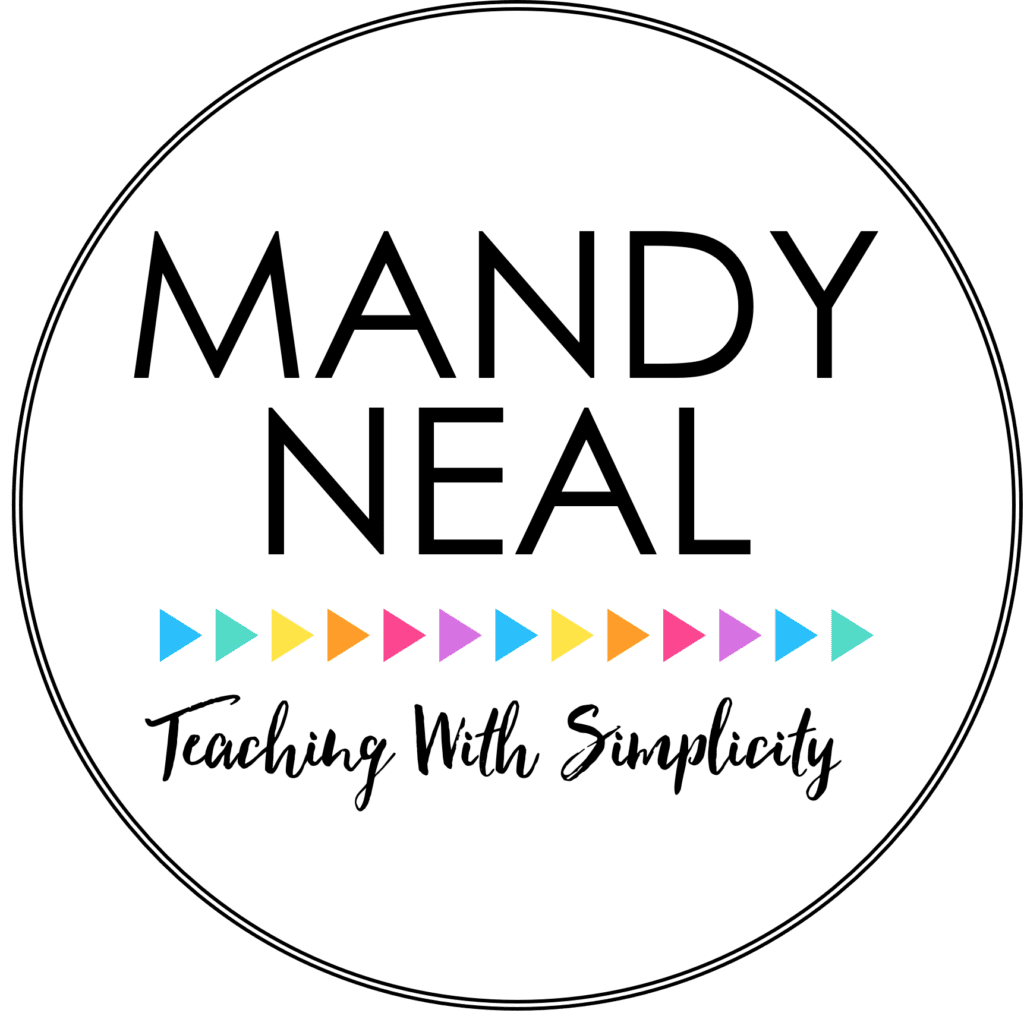Have you ever required your students to fill out an exit slip at the conclusion of a lesson or as a ticket out the door? You collect them, place them on your desk, forget about them, then later throw them in the trash? Or….maybe you don’t throw them away but hold onto them, because you aren’t sure exactly how you will decipher the information you collected or what to do with it? If you have, I can assure you that you are not the only one! I have done this, although I won’t disclose the number of times! 😉
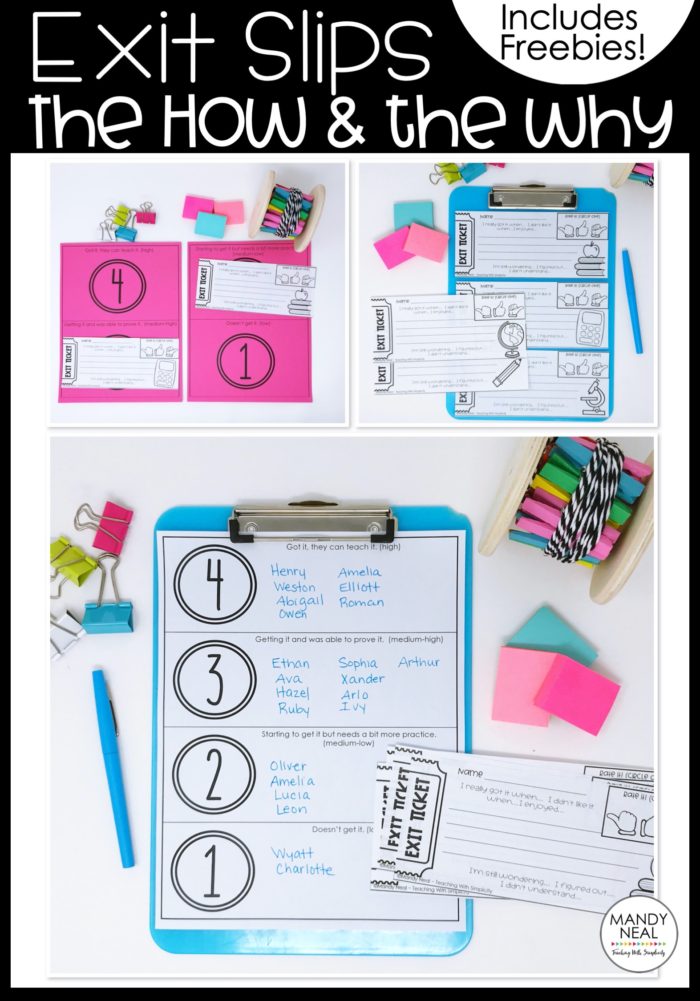
Purpose
The main purpose of the exit slip is for students to apply what they have learned by focusing on the learning target for a specific lesson.
They also guide instruction and will help the teacher determine if the students are ready to move on, need reteaching a bit of clarification, or additional practice.
How To Use
After a lesson, provide a prompt or a visual for students to respond to. Collect student’s exit slips, then sort the exit slips to meet your needs.
I sort them using a four-point scale.
4. Got it, they can teach it. (high)
3. Getting it, and was able to prove it (medium-high)
2. Starting to get it, but needs a bit more practice (medium-low)
1. Doesn’t get it (low)
Once I have them sorted I can easily group my students for cooperative learning activities or intervention/enrichment groups.
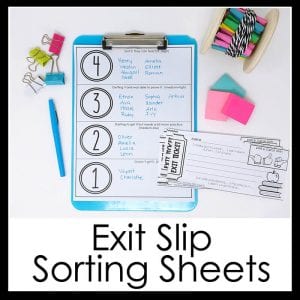
If the sort sheets above look helpful, you can download my version HERE in my Free Resource Library.
Cooperative Learning
I don’t want my students who got it and can teach it to be grouped with the students who don’t get it because frustration can occur very quickly with both sides. For cooperative learning activities I group my students using the following grouping:
- 4s with 2s
- 3s with 1s
Intervention/Enrichment groups
Fours and threes are given an enrichment assignment. Ones and twos meet with me. The total size of groups one and two will determine the number of intervention groups I have.
The cooperative learning groups and/or intervention groups don’t always happen. If 95% of my students land within a one or a two, then I am not going to group my students in any way. This tells me I need to reteach.
Also, if 95% of my students land within three or four, I’m moving on because they are ready.
Exit Slip Categories (Fisher & Frey 2004)
Prompts that document learning:
- Example: Write one thing you learned today.
- Example: Discuss how today’s lesson could be used in the real world.
Prompts that emphasize the process of learning:
- Example: I didn’t understand…
- Example: Write one question you have about today’s lesson.
Prompts to evaluate the effectiveness of instruction:
- Example: Did you enjoy working in small groups today?
Everyday Prompts
- Turn the learning target into a question
- Create and answer a problem/question based on today’s lesson that could be used to make a test.
- What is the most important thing you learned in today’s lesson?
- Compare and contrast _______ and ______.
- Give a true/false statement and have students defend their answers.
- How did what you learn today connect to what you learned yesterday?
- List 3-5 things you will remember about what you learned today.
Exit Slips Can Be…
- Premade with prompts to assist students (see my version of the premade exit slip below)
- Sticky Notes
- Index Cards
- Plain Jane scratch paper
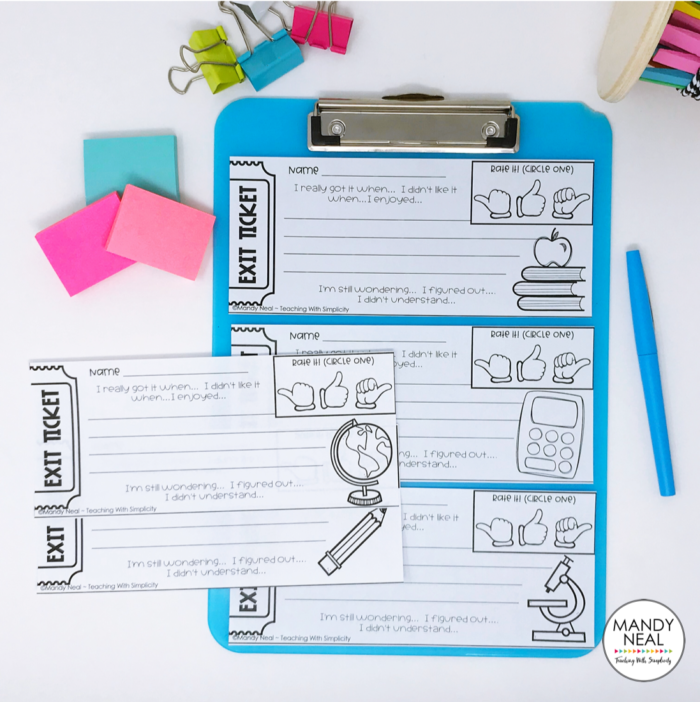
Additional Exit Slips
[ess_grid alias=”Exit Slips”]



